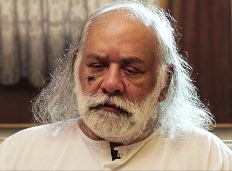Shakeel Siddiqui

Artist Shakeel Siddiqui was born in Karachi, Pakistan, on May 26th 1951.
About Shakeel Siddiqui Paintings
After finishing his first year at from Central Institute of Arts and Crafts, Karachi, Shakeel Siddiqui went to USA in `1970 and stayed there until 1973 when his father called him back to give a helping hand in his business. He later discovered that he was an artist only. He took admission in the Institute again and completed his art education, in 1975, obtained Diploma in Fine Art Painting. While he was in America he perused to study Fine Art Painting at Art Students’ League, New York and majored in portraiture under the guidance of eminent portrait painter Robert Broke man. He was inspired by Local Realist Painters and in 1980 when he painted a table covered with a lace table cloth for the first time. The subject became very popular and since then he has been painting it with different variations. Since the first One Man Show in 1972 at Portland, Maine, USA, Shakeel has participated in numerous group shows and solo shows. Since 1984, he has held positions as a lecturer of Fine Arts in many places around the world Including Pakistan and United Arab Emirates, teaching Realistic Oil Painting and Portraiture.
Shakeel Siddiqui’s objects are warm and bodied, curtains move, clothes retain the form of the wearer, bricks are weathered, and each composition tells a story, writes Marjorie Hussain – Art Critic
Shakeel is the only artist in Pakistan seriously painting in new realism. He paints at night and spends an average of sixty working hours per painting. Explaining the philosophy of his work Siddiqui speaks of his desire to prove that every object has its own character and beauty. Working in oil on canvas, he spends hours at his easel focused on painstaking precision and detail, preferably in an artificial light.
A master of manipulating shadows, he breathes narration into his work with a brush and the result is far from a cold representation of an object. The visual illusion of Super-realism involves the detail with which Siddiqui reproduces the textural quality of any material or object; silk, denim, wool, wood or lace. Often the artist is asked about his method and technique which appear to be like magic. Shakeel’s technical quality is flawless. Years of detailed portraiture put to good use. He does not belong to that breed of artists who, at a week’s notice, can churn out 20 canvases without breathing hard. His compositions are finished in photographic detail, true to light and color. One can’t think of any other artist in Pakistan who practices this genre of painting.
Siddiqui admits that his burning ambition is to execute a series of paintings documenting Pakistan’s history. He has painted a 44ft x 8ft portrait of the Quaid-i-Azam taking the oath of office, now in the Quaid-i-Azam Museum.
Quddus Mirza from THE NEWS, Lahore is quoted to have said: “Like art itself, concepts and beliefs in art also keep changing. However, Shakeel’s choice to paint in the realistic manner can be regarded as a sign of courage and an act of out of the ordinary—amid the abstract and semi-abstract daubing around.”
In 2001, he exhibited at the Highgate Gallery, London, and was pleased when art students visited the gallery and discussed his technique with him. Three art collages organised visits by their students who bought their drawing books along and, with Siddiqui’s approval, sketched the various paintings. In 2002 USA he was awarded an ‘Honourable Mention’ by the Artist’s Magazine, and in 2004, he was a finalist in the category of Still-Life at ARC’s first International Salon Competition, USA. In 2003, he showed his work in a gallery close to Rotterdam, and Siddiqui spoke of the practical gallery custom.
“Those who have seen Shakeel’s work will agree that the super-realist does not conform to the contemporary trends in art. His.”— Romana Hussain, STAR WEEKEND.
 Epicartgallery.pk
Epicartgallery.pk